No matter what kind of roof your home or business has, it’s important to understand your roof and how to watch for warning signs. As you start thinking about your roof, it’s best to start with the basics.
Once you know what type of roof your house has, you can begin to keep an eye on it, understand the maintenance it needs, and, eventually, you can ask the important questions when it comes time to replace your roof.
So, what type of roof do you have? Let’s look at the basic types of roofs so you can identify yours.
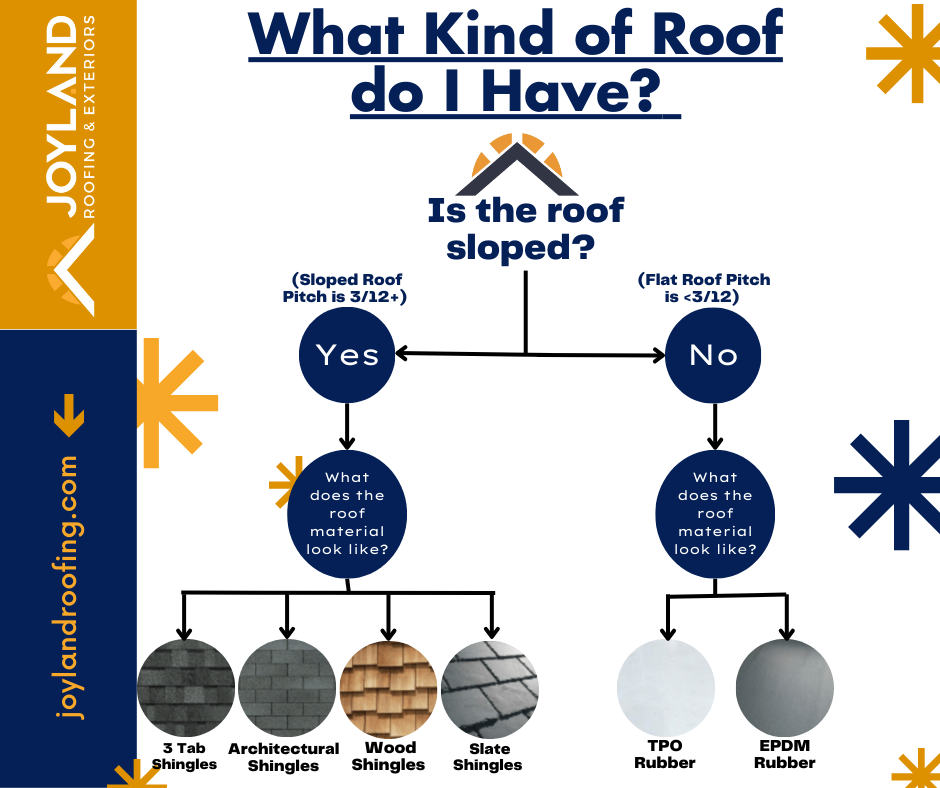
Difference Between a Sloped Roof and a Flat Roof
Sloped and flat roofs have different roofing materials covering their exterior. You want your roof to shed water correctly and the material put on your roof depends on the pitch.
Roofers will refer to the grade of slope as the “roof pitch.” The pitch measures how many inches the roof rises for every 12 inches of depth. If the pitch of your roof is “8/12” then it rises 8 inches every 12 inches inward.
Occasionally, the roof pitch can be discussed using degrees. An 8/12 pitch roof is equivalent to a 66.7 degree roof.
Sloped roofs have a pitch that is 3/12 or greater. A completely flat roof is considered 0/12 pitch and a low slope roof is between 1/12-2/12 pitch.
Sloped Roofs
If you own a traditional home, chances are you have a sloped roof. A sloped roof requires an exterior roofing material that aids in the shedding of water and snow, such as shingles or metal. Not just one type of each material exists, as you will read below.
3-Tab Shingles
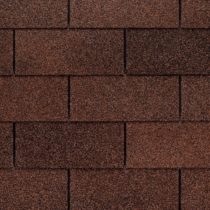
These are the classic asphalt shingles that you’ll see on most older homes. They’re easy to spot because they come in separate tabs for that traditional shingled look. If your house has three tab shingles, it might be a sign that your roof is getting older and could be due for an inspection.
Architectural Shingles
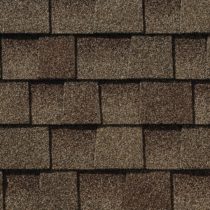
These sharp-looking shingles are becoming more popular for their look and their durability. Most contractors recommend architectural shingles. You’ll see them on recent construction and newer re-roof projects. If your house has architectural shingles, it’s probably been reroofed more recently, and may have quite a few more years left in it, though you should continue to monitor your roof for damage and leaks. Architectural shingles options are continuing to expand by offering many different colors and designer styles.
Metal Panels
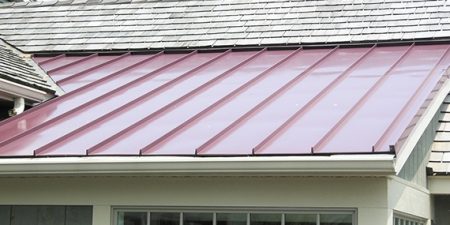
Your home, business, or outbuilding might have a metal roof, since metal roofs are one of the most versatile options. These roofs are durable and attractive. If you have a metal roof, it’s possible it’s been there for a long time. That doesn’t mean it needs to be replaced, but you’ll want to keep an eye on it for leaks.
Metal roofing comes in different styles:
- Corrugated
- Standing seam
- Tiles
Slate Shingles
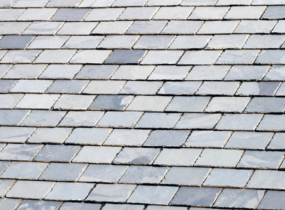
Many old homes on the east coast were roofed with slate. While this is one of the best-looking roof options around, slate is fragile and brittle, and may require quite a bit of repair. If your home has a slate roof, it’s best to stay current on maintenance to make sure the roof isn’t leaking, and to preserve the attractiveness of your antique slate.
Wood Shakes & Wood Shingles

Wood roofing material roofs look great. They have been around for hundreds of years, and their rustic look means they’re never going away.
You can see the difference between wood shakes and wood shingles. Since wood shingles are machine made, they have cleaner cuts and are smoother. Wood shakes are hand-made and look textured.
Wood roofing materials age differently than other shingles, so if your home has a wooden roof, it’s best to monitor it closely for signs of leaking and broken shakes or shingles. Color changes in your shakes is natural, though. As the wood ages and is exposed to the elements, the color of your roof will change, and doesn’t mean it needs to be replaced immediately.
Flat Roofs & Low-Slope Roofs
If you own a commercial business or a home in a city like Lancaster, PA, or Harrisburg, PA, you probably have a flat roof or low-slope roof.
Flat roofs can also be referred to as “rubber roofs” because that is the roofing material that is installed. Rubber is ideal for low- to no-slope roofs thanks to its water-resistance and durability. Shingles are not installed because pooled or melting water could seep between the shingles and eventually make it into your home or business.
TPO Rubber

TPO, Thermoplastic Polyolefin, roofs are popular and relatively low cost. If your flat roof is made of white material, there’s a good chance it’s TPO. TPO is a good choice for a flat roof, but over the years it can shrink or expand, creating bubbles, pulling away from corners, or opening at seams. Sometimes these problems can be fixed quickly and cheaply with simple repair work.
EPDM Rubber
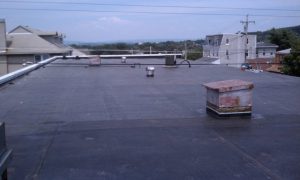
EPDM, ethylene propylene diene monomer, is another common flat-roofing material. It’s a thinner rubber than TPO, and typically comes in black. Because it’s rubber, it can last longer in changing climates than TPO, but, like any other roof, should be inspected regularly. This is the most common type of rubber roofing for residential dwellings.
Let us help you
No matter what kind of roof you have, it’s crucial to inspect your roof regularly. Often leaks or other structural damage can fly under the radar for a long time, slowly growing from a minor repair into major damage.
You can learn the condition of your roof by contacting us for an inspection.
Whether you have three tab shingles, EPDM, or anything in between, we want to make sure your roof protects your home or business for years to come.
Pennsylvania Home Improvement Contractor License (HIC) # PA124258


